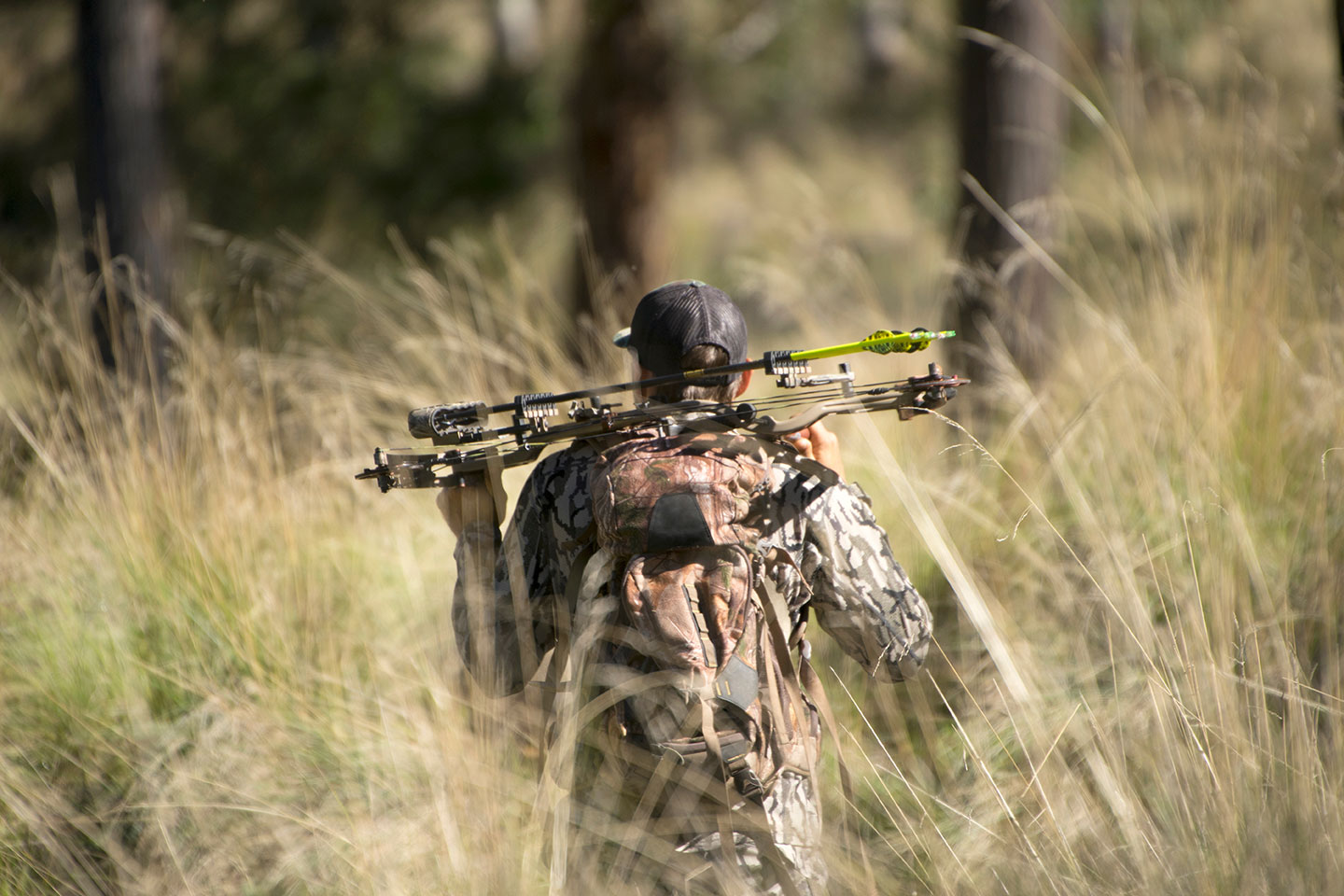Archery has come a long way since the days when Native American hunters relied on hand-carved bows, arrows, and chipped flint arrowheads. Today’s archer enjoys the benefits of precision-engineered compound bows made from advanced materials like carbon fiber, aluminum, and magnesium. But how do these modern advancements stack up against the simpler, handcrafted tools of Native Americans? In this article, we’ll explore the contrasts between traditional and modern archery equipment, highlight the skills required for each, and examine how these changes have shaped the sport of bow hunting today.

Native American Bows and Arrows: A Mastery of Craftsmanship and Instinct
Native American archers relied on their ability to handcraft their bows and arrows from the resources available in their natural surroundings. Each bow was a labor of love, requiring hours of work and an intimate understanding of nature’s materials. Wood such as yew, ash, and hickory were common choices for bows, while arrows were often fashioned from reeds, dogwood, or willow.
The arrowheads, typically made from flint or obsidian, were skillfully chipped to a razor-sharp edge, perfect for piercing the tough hides of bison, deer, and other game. These tools were designed with simplicity and functionality in mind, yet they were incredibly effective. The process of creating a bow was an art, with each bend, carve, and sinew-bound string adding to the strength and balance of the weapon. The bowstrings themselves were often made from animal sinew, plant fibers, or rawhide, each strand carefully twisted for strength and flexibility.
Native Americans shot their bows instinctively, relying on muscle memory, practice, and an innate feel for their environment. They didn’t have the luxury of precision sights or range finders; instead, they developed a deep sense of distance and trajectory. This ability was honed over years of practice, allowing them to react quickly and shoot accurately under pressure.

Modern Archery Equipment: Precision Engineering for Accuracy and Power
In stark contrast to the handcrafted tools of the past, modern archery equipment is the result of cutting-edge engineering and advanced materials. Today’s compound bows, the most popular choice among modern hunters, are made from materials such as carbon fiber, aluminum, and magnesium. These materials are not only lightweight but also incredibly strong, allowing for greater speed, power, and accuracy.
The limbs and risers of compound bows are precision-machined to exacting standards, and the addition of cams, pulleys, and cables creates a mechanical advantage that allows the archer to draw heavier weights with ease. The result is a bow that can generate more power while requiring less physical effort from the shooter.
Modern arrows, too, have seen significant advancements. Instead of wood, they are now made from carbon, aluminum, or a combination of both. These materials allow for greater consistency in weight and balance, ensuring that every arrow flies straight and true. Additionally, modern broadheads, which come in both fixed and mechanical varieties, are designed to be razor-sharp and incredibly durable, ensuring a clean, humane kill.
One of the most significant advantages modern archers have is the availability of advanced aiming technology. Unlike Native Americans who relied on instinct, today’s hunters can use digital range finders to measure the exact distance to their target. This information is then fed into high-tech sights that are preset for specific yardages, allowing for pinpoint accuracy even at long distances. This blend of technology and engineering has transformed archery from a skill of instinct to one of precision.

Comparing Traditional vs. Modern Broadheads: Flint and Steel
Native American arrowheads were primarily made from materials like flint, obsidian, or bone. These arrowheads were hand-knapped, meaning that each one was unique, with small variations in size, shape, and sharpness. These broadheads were effective at penetrating animal hides and were more than capable of bringing down large game.
In comparison, modern broadheads are made from advanced materials like stainless steel and are designed with extreme precision. Fixed blade broadheads remain popular for their reliability and durability, while mechanical broadheads, which deploy razor-sharp blades upon impact, have gained favor for their aerodynamic design and larger cutting diameter.
While traditional broadheads required regular maintenance to stay sharp and were subject to wear, modern broadheads are designed to be razor-sharp out of the package and maintain their edge through multiple uses. This is just one example of how modern materials and manufacturing processes have given hunters an edge in the field.

Instinctive Aiming vs. Modern Technology: A Clash of Styles
One of the most significant differences between Native American archery and modern hunting is the approach to aiming. Native American hunters relied solely on instinct, practice, and an intimate knowledge of their surroundings to judge distances and aim their shots. They developed an almost sixth sense for how far away their target was and how much they needed to adjust their aim to account for distance, wind, and other environmental factors.
In contrast, modern hunters have access to a wide range of technological aids to help them aim. Digital range finders can quickly and accurately measure the distance to a target, while advanced sight systems allow hunters to dial in their bows for specific distances. This precision technology has made it easier for hunters to take accurate shots at longer distances, reducing the margin for error and increasing the likelihood of a successful hunt.
While modern technology has undoubtedly improved the accuracy and effectiveness of today’s archers, it has also changed the nature of the sport. Traditional archery required a deep connection with the environment and an intuitive understanding of distance and trajectory, while modern archery relies more on precision tools and technology.

The Timeless Appeal of Bow Hunting
Despite the many advancements in modern archery, there is something timeless about bow hunting that continues to captivate hunters today. Whether using traditional or modern equipment, the thrill of drawing a bow and releasing an arrow remains unchanged. For many, bow hunting is more than just a way to put food on the table; it is a connection to the past, a way to engage with nature, and a challenge that requires skill, patience, and discipline.

How to Experience Bow Hunting on Your Own Land
If the thought of bow hunting excites you, owning your own piece of hunting land could be the key to experiencing the great outdoors whenever you desire. As a real estate broker specializing in land sales, I can help you find the perfect hunting property. Imagine waking up to the crisp morning air, hearing the sounds of wildlife, and knowing that your next bow hunting adventure is just steps away. Whether you’re looking for a small plot of land close to home or a larger property for your family to enjoy as a weekend getaway, I can assist you in finding a hunting tract that meets your needs.
Contact me today, and let’s discuss how I can help you find the hunting land that fits your vision. With your own property, you can create lasting memories while enjoying the sport of bow hunting with family and friends.

FAQs
What materials were Native American bows made from?
Native American bows were typically made from wood like yew, ash, or hickory, and the strings were crafted from animal sinew or plant fibers.
How are modern compound bows different from traditional Native American bows?
Modern compound bows are made from materials like carbon fiber, aluminum, and magnesium, and they use cams and pulleys to increase power and reduce the physical effort needed to draw the bow.
What is instinctive shooting in archery?
Instinctive shooting is a method of aiming where the archer relies on muscle memory and intuition to judge distances and shoot accurately, without the aid of sights or range finders.
How are modern broadheads different from Native American arrowheads?
Modern broadheads are made from materials like stainless steel and are designed to be razor-sharp and highly aerodynamic, while Native American arrowheads were hand-knapped from flint or obsidian.
Why do hunters use digital range finders?
Digital range finders allow hunters to quickly and accurately measure the distance to their target, which can then be used to adjust their aim for better accuracy.
Can I use traditional archery equipment for modern hunting?
Yes, many hunters enjoy using traditional bows and arrows for a more challenging and authentic hunting experience, though modern equipment offers advantages in power and accuracy.

